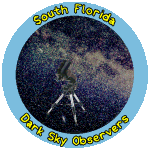
 |
Objects to View with a Telescope |
|
There are three major groups of objects in the sky: Solar system
objects, Milky Way objects, and Galaxies. Each have their own appeal,
and at least a few objects from each category can be viewed on any
good clear night. What you can see is dependent on a lot of factors. The most important of these for astronomy is aperture. Other important factors are the optical quality of your telescope, the steadiness of your tripod and mount, the seeing conditions on that particular night, light pollution of the sky at your location (city or rural), brightness of the object you are seeking, and your individual level of experience. You won't be able to see the American flag on the surface of the moon or black holes. You won't see as much color as you see in astrophotographs (photos of celestial objects) because these utilize long exposure times which allow the light and color to build up on the film or in the CCD chip. The following pictures were taken by amateur astronomers using portable telescopes set on tripods. All of the objects shown below (including the galaxies) are readily observable through the eyepiece of a relatively modest scope. | ||||
|
Solar System Objects These are the closest and often most beautiful objects in the sky. Viewing any of them with a small telescope is a rewarding experience. Since all solar system targets are nearby objects (astronomically speaking), they move through the sky a noticeable amount from night to night, and many of their surface features change significantly on an hourly basis. | ||||
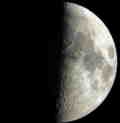 |
Earth's Moon Prepare for an awesome spectacle. The moon's disk has a pastel-cream and gray background, streamers of material from impact craters stretch halfway across the lunar surface, river-like rilles wind for hundreds of miles, numerous mountain ranges and craters are available for inspection. At low or high power the moon is continually changing as it goes through its phases. Occasionally you will be treated to a lunar eclipse. | |||
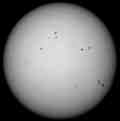 |
Our Star, the Sun It is quite safe to view the Sun if you utilize a proper solar filter. The Sun is fascinating to inspect as you detect and watch the ever-changing sunspot activity. With a narrow band hydrogen alpha filter, you can observe prominences flare up and escape from the surface of the sun within a morning's viewing. If you are fortunate enough, and are willing to travel to remote locations, you may at some point experience a solar eclipse. | |||
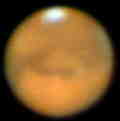 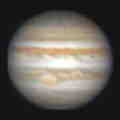 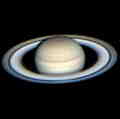 |
The Planets Observation of planets will keep you very busy. You can see Jupiter with its great red spot change hourly, study the cloud bands and watch its moons shuttle back and forth. Study Saturn and its splendid ring structure, watch Venus and Mercury as they go through their moon-like phases. Observe Mars and see its polar cap change in size from week to week or watch the summer dust storms obscure the entire planet in a dull red haze. The outer planets of Uranus and Neptune can be seen easily with 8" or larger telescopes. Tiny Pluto is a difficult target for any amateur scope, since it is too small and too distant to present a disc when viewed from Earth. | |||
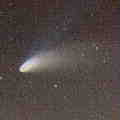 |
Comets Magnificent comets are routinely visible through telescopes. Low magnification powers with wide fields of view are preferable for these large and beautiful spectacles. | |||
|
Milky Way Objects There are a wealth of beautiful but sometimes fuzzy objects within the grasp of a small portable telescope. In fact, many of the larger star clusters require the use of a small scope to capture the entire object within the field of view of the eyepiece. The relatively short focal length refractors are best for this purpose. | ||||
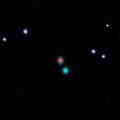 |
Binary Stars These are pairs of stars orbiting around a common center of gravity, often of different and contrasting colors. There are literally hundreds of doubles and triples with angular separations ranging from several arc-minutes, which are easily observable with a pair of binoculars, down to sub arc-seconds, which present a challenge for even the largest of the amateur telescopes. | |||
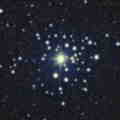 |
Open Star Clusters Open star clusters (also called galactic clusters) are loosely arranged groups of stars, occasionally not too distinctive from the background stars. The typical open cluster will contain several dozens of bright stars, often times arranged into interesting shapes and "structures". On a galactic time scale, open clusters are short lived features, dissipating and scattering their stars within a few hundred million years of their formation. | |||
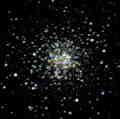 |
Globular Star Clusters Globular star clusters are tightly packed groups of hundreds of thousands up to a few millions of stars. They are all very, very old, possibly pre-dating the Milky Way itself. They are gravitationally bound structures, and the high density of stars near their cores causes frequent close encounters, promoting the formation of many binaries and even an occasional stellar merger. | |||
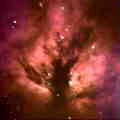 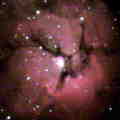 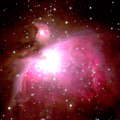 |
Emission Nebulae Emission nebulae are bright clouds of ionized gas and dust that are actually one of the late stages in the formation of a open star cluster. The sequence of events starts out with a large, cold, dark cloud of molecular gas and dust. Although these dust clouds can remain stable for billions of years, when an external compression wave passes through the cloud, it begins to condense into stars. Each new star that forms leaves a hole in the cloud, reducing the gas pressure locally, but eventually heating up and increasing both the temperature and the pressure a short distance from the young star. This heating and compression increases the rate of star formation, and somewhat counter intuitively increases the size of the stars as well. Eventually, this leads to the creation of the largest of all stars (types O and B), which radiate intensely in the ultra-violet, ionizing the remainder of the cloud and causing its evaporation and eventual dissipation. At this point, we see the entire structure as a bright emission nebula with an embedded and partially hidden star cluster. The process now evolves rapidly, and within a million years, all the gas and dust is gone, leaving a new young open star cluster in its place. Three examples of emission nebulae are shown at the left. The Flame (top) is being ionized and illuminated by a blue type O super-giant just outside the field of view. The Trifid (center) is a hollow bubble with two ionizing stars at its center (one type O and one type B). The Trapezium (bottom) consists of four type OB super-giants that have already blown away most of the surrounding nebula. | |||
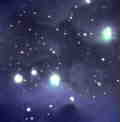 |
Reflection Nebulae Reflection nebulae are diffuse clouds of neutral gas and dust that are visible near young stars and star clusters. | |||
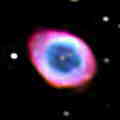 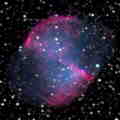 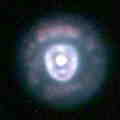 |
Planetary Nebulae Planetary nebulae (a misnomer, as they have nothing to do with planets) are relatively small and often odd-shaped clouds of expanding gas and dust that represent the the final stage in the life cycle of a small to medium sized star (from ½ to 8 solar masses). They are formed from the outer envelope of a red supergiant when it goes through what is called "helium shell flash". This occurs after all the helium in the core has been consumed and the star is burning helium in shell around the core and hydrogen in second shell around the helium. This two tiered fusion structure is inherently unstable, and within a hundred thousand years, the instability builds into a catastrophic pulse where the rate of helium burning increases several million fold in just a few minutes. The energy released by this nearly explosive day-long event ejects the entirety of the star outside of the core (up to 80% of the mass) into space. Deprived of the gravitational pressure from its outer self, the helium burning is extinguished, and the core slowly collapses into a white dwarf. For the next twenty thousand years, the previously ejected matter is brightly illuminated by the hot stellar cinder, which is all that remains of a once noble star. If the progenitor star is sufficiently large, helium shell flash and mass ejection will reoccur in a repeating sequence, producing a complex multi-layered nebula. Each layer contains a different mix of elements and radiates with its own unique set of colors. Three examples are shown at the left. The Ring (top) consists of an equatorial ejection with little or no bipolar component. This is possibly caused by a high rotational rate in the parent star. The Dumbbell (center) was a spherical ejection, but an unseen companion star has swept up most of the ejecta in its orbital path. The Eskimo (bottom) is an excellent example of a multi-layered planetary nebula, with both spherical and bipolar components. | |||
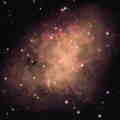 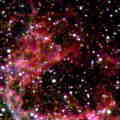 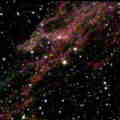 |
Supernova Remnants Supernova remnants are large and rapidly expanding fields of debris expelled by the titanic explosion that occurs at the end of the life cycle of a large star (8 to 50 solar masses). In these very massive stars, gravitation both moderates and overpowers the tremendous energy of helium burning, and the core of the star grows larger and more massive as it evolves. Helium burning is eventually replaced by carbon, oxygen, neon, and silicon stages. Somewhere along this sequence, the core becomes gravitationally unstable and catastrophically collapses into what is called a "neutron star". This event releases as much energy in a few dozen milliseconds as the sum of all the energy released by the star in its several million year lifetime. The resulting fireball is so bright that it easily outshines its parent galaxy and for several weeks it can bee seen from across the entire universe. All that remains of the original star is a 20 kilometer glob of sub-atomic particles, endowed with a tera-gauss magnetic field and spinning up to a few hundreds of revolutions per second. As it slowly spins down, dissipating its angular momentum in the process, it can be observed from Earth as a "pulsar". Shown at the left is the 950 year old Crab Nebula (top) and two shots (center and bottom) of the much older and larger Bridal Veil Nebula. | |||
|
Galaxies These are vast, remote "island universes," each composed of many billions of stars. Galaxies exist in a variety of sizes with regular and irregular shapes. Large apertures and dark skies are a must for viewing these dim fuzzy objects. | ||||
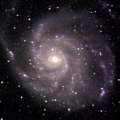 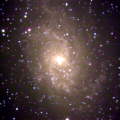 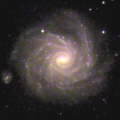 |
Grand Design Spiral Galaxies Grand design spiral galaxies are flat and wound up like a hurricane. They are amongst the most picturesque objects in the sky. Shown at the left top is NGC5457 (M101), which can be found just to the west of the handle of the big dipper in the constellation Ursa Major the Great Bear. Directly beneath it is the very nearby NGC598 (M33) in the constellation Triangulum, followed by the much more distant NGC1232 in the constellation Eridanus. | |||
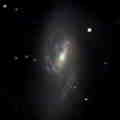 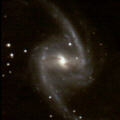 |
Barred Spiral Galaxies The rotational dynamics of barred spiral galaxies are poorly understood, although they are very common objects in the universe at large. Our own Milky Way is suspected of being a member of this class of galaxies. Shown at the left top is NGC3627 (M66) in the constellation Leo the Lion. Below it is NGC1365 in Fornax the Furnace. | |||
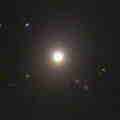 |
Eliptical Galaxies Eliptical galaxies are often very large, and they usually are devoid of observable features. They are common in cores of galactic clusters, and they seem to serve as a gravitational anchor for the remainder of the cluster. The example shown at the left is NGC4486 (M87) in the constellation Virgo the Virgin. Scientists estimate that it contains well more than a trillion stars and has a giga solar mass black hole at its core that is actively accreting gas, dust, and an occasional wayfaring star or two. | |||
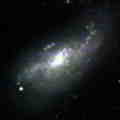 |
Irregular Galaxies Irregular galaxies include all that are not able to be tossed into one of the above categories. | |||
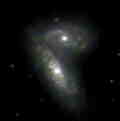 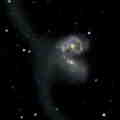 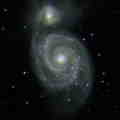 |
Interacting Galaxies Two or more galaxies interacting with one another are very common occurrences in the universe around us. Shown at the top left are the Siamese Twins NGC4567 & NGC4568 in the constellation Virgo the Virgin. The cental image shows the Antennae Galaxies NGC4038 & NGC4039 in the constellation Corvus the Crow. Their recent very close encounter has thrown out two tails of stars, each of which is more than a million light years in length. At the bottom of the set is the incredibly beautiful Whirlpool Galaxy NGC5194 (M51) and its dwarf companion NGC5195 in the constellation Canes Venatici, the two hunting dogs of Bootes: Astarion and Chara. | |||
| Back | Home |